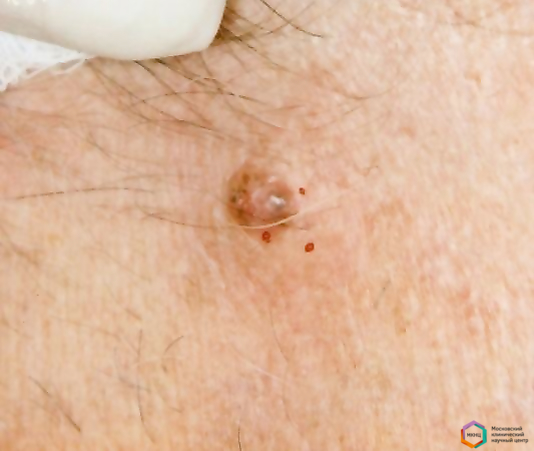Benign prostatic hyperplasia (adenoma)
Benign prostatic hyperplasia (adenoma) (BPH) is a benign formation of the sex gland located in the small pelvis of a man, developing from the glandular epithelium, or the stromal component of the prostate.
In this disease, nodes are formed in the prostate gland, which gradually grow, squeezing the urethra. As a result, there is a violation of urination. BPH is a benign tumor, which fundamentally distinguishes it from prostate cancer. However, despite its benign nature of growth, this disease, in addition to the deterioration of the patient's quality of life, in advanced cases can lead directly to a serious risk to the patient's life.
 Most often, a man over the age of 45 is faced with the problem of so-called prostate adenoma, or benign prostatic hyperplasia (BPH).
Most often, a man over the age of 45 is faced with the problem of so-called prostate adenoma, or benign prostatic hyperplasia (BPH).
According to statistics, more than 30% of men over the age of 50 and more than 70% of men over the age of 60 suffer from so-called lower urinary tract symptoms (LUTs), expressed to some extent. They are caused, as a rule, by benign prostatic hyperplasia. Basically, this is frequent difficulty urinating, including at night, a feeling of incomplete emptying of the bladder.
Many men in our country are just shy to go to the doctor with this problem and live with it. However, if left untreated, symptoms tend to progress due to a gradual increase in the volume of the prostate gland, which can lead to the development of serious complications that require emergency surgery. Therefore, it is so important to contact a specialist for help in a timely manner. After all, in the early stages of the disease, drug therapy is often enough.
 The Urology Department of the MCSC is a "contact person" for all men: for those who would like to undergo a preventive examination and examination, and for those who are looking for help for existing prostate diseases. The choice of treatment method in each specific case should be based on the data obtained as a result of a thorough examination of the patient. The Urology department of the MCSC uses all modern and necessary methods of patient examination that meet international standards for the diagnosis of prostate diseases.
The Urology Department of the MCSC is a "contact person" for all men: for those who would like to undergo a preventive examination and examination, and for those who are looking for help for existing prostate diseases. The choice of treatment method in each specific case should be based on the data obtained as a result of a thorough examination of the patient. The Urology department of the MCSC uses all modern and necessary methods of patient examination that meet international standards for the diagnosis of prostate diseases.
The Urology Department of the MCSC is a "contact person" for all men: for those who would like to undergo a preventive examination and examination, and for those who are looking for help for existing prostate diseases. The choice of treatment method in each specific case should be based on the data obtained as a result of a thorough examination of the patient. The Urology department of the MCSC uses all modern and necessary methods of patient examination that meet international standards for the diagnosis of prostate diseases.
It is possible to choose the right treatment tactics in difficult cases thanks to the clinical conferences that exist in our Center. Discussio mater veritas est (from Latin - "in dialogue, truth is born").
Currently, the urological community has numerous methods of treating BPH. There are methods of both conservative and surgical treatment. Properly selected drug therapy (therapy with alpha-blockers, 5-alpha-reductase inhibitors, M-cholinolytics) in the early stages of BPH effectively reduces the manifestations of LUTS, but, as a rule, only delays the time before the need for surgical treatment.
The Department of Urology of the MCSC has many years of experience in the surgical treatment of BPH, both open and endoscopic. Transurethral resection of the prostate (prostate TOUR) - endoscopic method of removal of hyperplastic prostate tissue-is the "gold standard" of surgical treatment of BPH. It is one of the most effective methods of minimally invasive treatment of BPH. The operation is performed using a special instrument (resectoscope) inserted into the urethra. The duration of the operation is about 60 minutes. Independent free urination is restored on the 3rd day after the operation. Complications after this operation occur very rarely. In the Department of Urology of the MCSC, about 200 such operations are performed per year over the past 10 years.
"Open" surgery (trans-bubble and posadilon adenomectomy) is used for large prostate sizes (90-100 cm3 or more). In our urological clinic, Professor Gorilovsky L. M. developed his own improved technique for performing trans-vesicular adenomectomy, which was widely used in our practice and allowed us to significantly reduce the number of complications. However, recently, the trans-bubble technique of performing adenomectomy has given way to the posadilon technique, which has been successfully implemented and is being performed in the Urology Department of the MCSC. It is characterized by less trauma, a fast rehabilitation period, less blood loss and no need for additional drainage of the bladder through a cystostomy. Posadilon adenomectomy is less traumatic, since the entire operation is carried out under the control of vision and is characterized by fewer postoperative complications.
In the Department of Urology of the MCSC, you will have access to all possible types of modern examination and effective treatment of benign prostatic hyperplasia and its complications.





